Introduction
Understanding the distinct role of every photograph is the first step toward universal accessibility in e-commerce. This guide establishes a systematic framework for image identification, allowing writers to categorize visuals by their Technical, Content, and Intentional Contexts. Mastering this process ensures the alt text accurately reflects the unique objective of each shot, from Studio introductions to functional Infographics, thereby enhancing the overall customer experience.
In the dynamic landscape of online commerce, your visuals are your storefront. Exceptional product photography is the most powerful tool you have to draw in consumers, communicate the quality of your merchandise, and provide essential information.
However, since no two product photos share the exact same objective or visual focus, their descriptions must also vary. The key to powerful accessibility lies in crafting your image description to align with its context and intended purpose.
Knowing that these images are crucial in supporting customer shopping goals and helping customers arrive at purchasing decisions, this guide addresses the fundamental questions for image description writers: what are the types of e-commerce images, what purpose do they serve, and what should an alt text author consider when writing their descriptions?
About This Resource
This guide serves as an essential manual for e-commerce image identification. The reader will gain expertise in recognizing different image categories and the distinct role each one plays in the shopper's decision-making journey. More critically, the resource breaks down the types of context necessary for crafting high-quality image descriptions that truly enhance the customer experience.
The three types of context that will be discussed are:
- The Technical Context is the verifiable, objective data about the product that the image is intended to confirm .
- The Content Context refers to the image's location within the e-commerce customer journey.
- The Intentional Context captures the strategic purpose behind the image's creation.
The following guide describes each image type, illustrating how the focus within these three contextual inputs shifts based on the image’s unique objective.
Image Type: Studio Shot
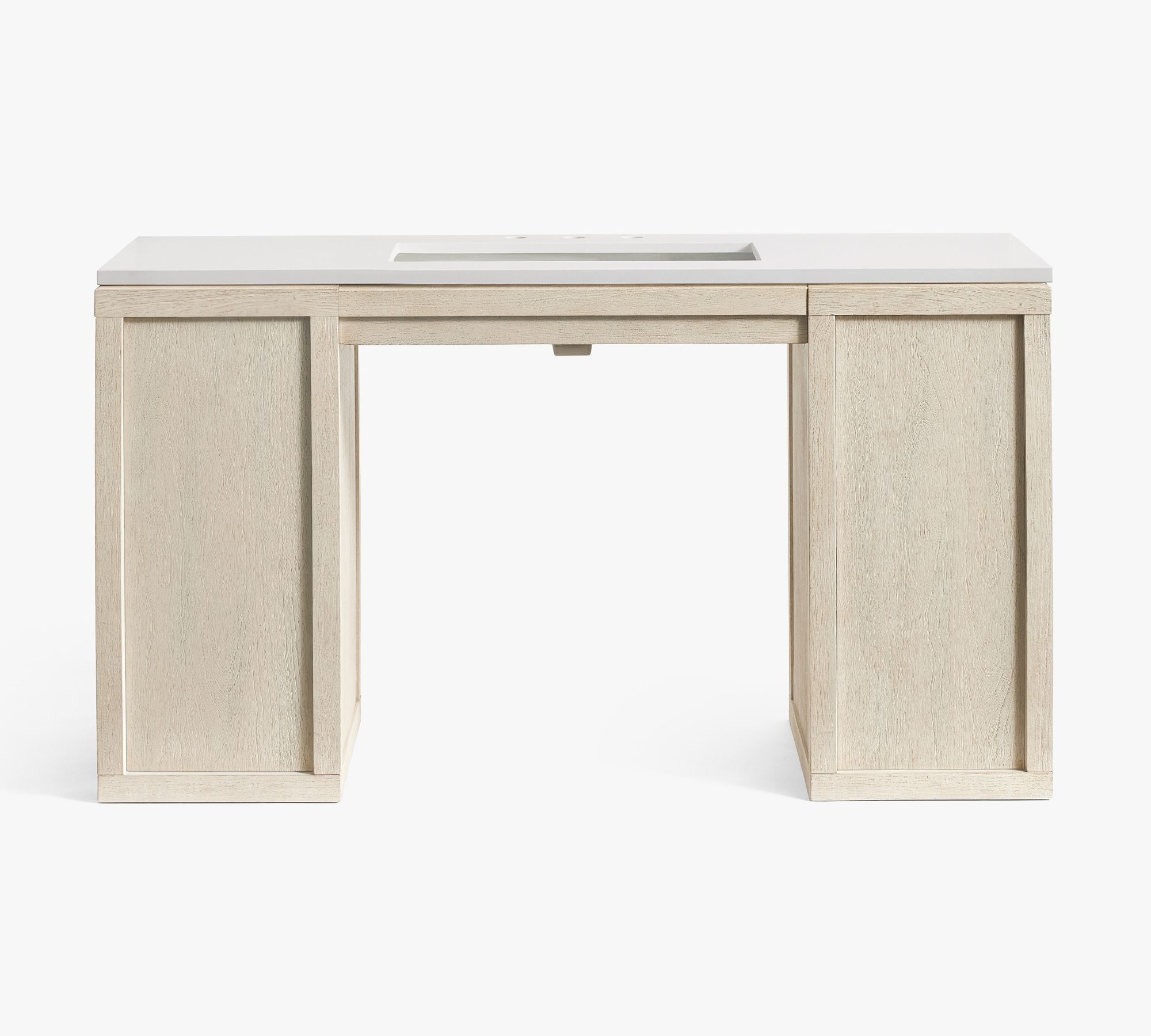
What is the purpose of the image?
The Studio Shot is the product's formal introduction: a clean, high-quality image of the item alone, typically set against a pure white or plain background. Its purpose is to provide a clear, distraction-free view of exactly what the customer is buying.
What is the image description strategy?
Your alt text for a studio shot should be the most technical and fact-based. It needs to confirm the core features, color, and finish without the distraction of setting. Focus on the literal appearance, noting the background only to confirm the product is isolated, and state the dimensions if they are critical to understanding the item's size.
Image Description
Front-facing product image of single-sink vanity shown against a plain white background. The style is rustic-modern with a light brown wood textured finish and a white quartz countertop with a rectangular sink.
What are the types of context to reference when describing a studio shot?
Technical Context (The "What")
When analyzing a Studio Shot, the writer must focus on the product's fundamental properties: its official name, exact materials, specific color, and critical dimensions. This context ensures the description is factually precise and directly links the visual asset to the inventory or catalog data.
Content Context (The "Where")
The writer must confirm the image's deployment location as a main gallery image on a Product Detail Page (PDP). This context confirms the product must be presented without visual distraction, emphasizing literal accuracy above all else.
Intentional Context (The "Why")
The Studio Shot's primary purpose is to confirm objective presentation. The alt text must act as the factual, literal representation of the product, serving as the basis for all other descriptions and excluding any subjective or aspirational language.
Image Type: Lifestyle Shot (or In-Context Shot)
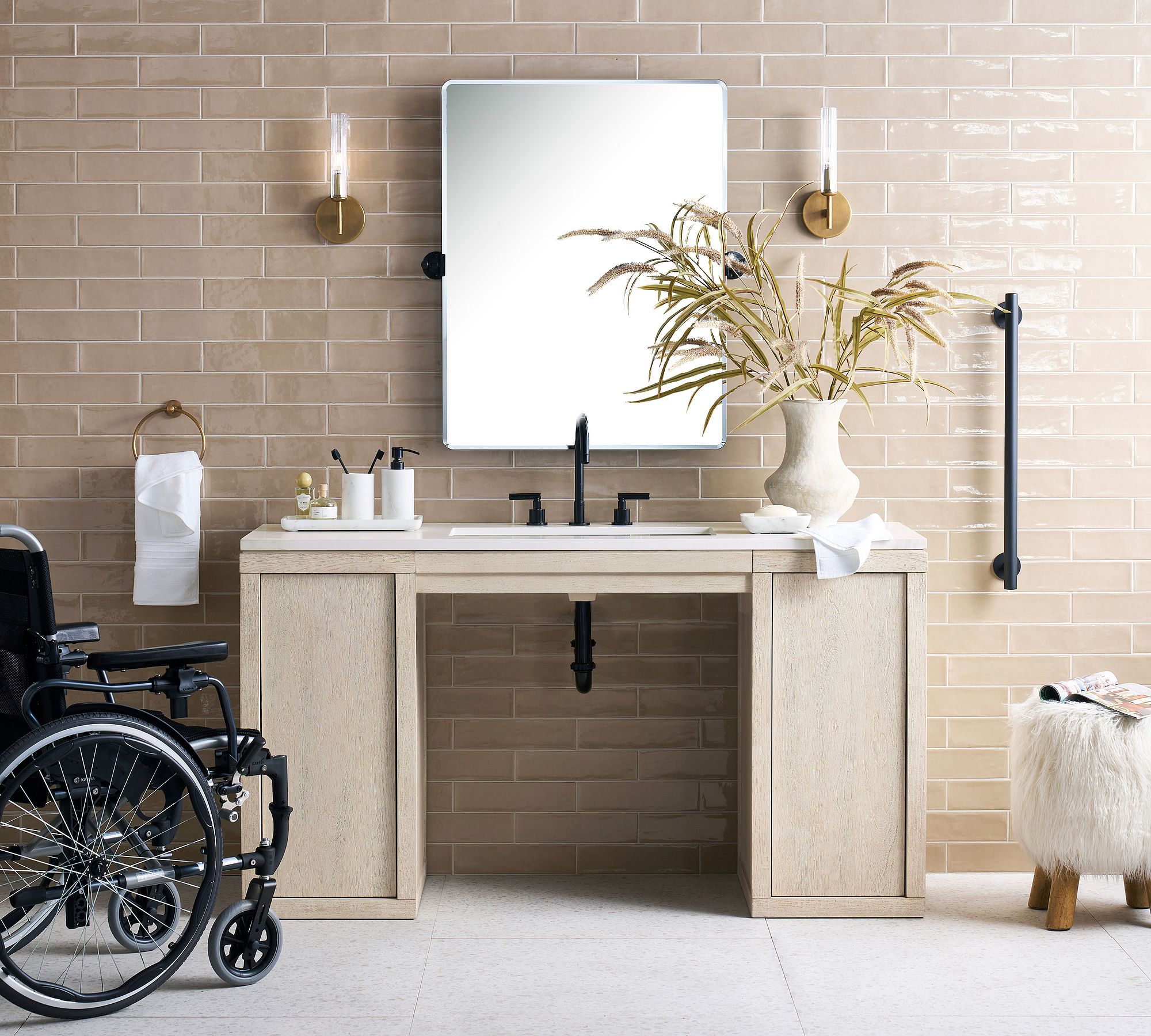
What is the purpose of the image?
A Lifestyle Shot brings the product to life by showing the item in action (e.g., a sofa in a decorated living room, or a kitchen appliance on a counter). Its main purpose is to help customers visualize the product in their own lives. It answers questions like, "How big is it?" or "How would I use this?" and sells a "feeling" or "experience," not just an item.
What is the image description strategy?
This alt text must capture the scene, the context, and any functional elements being highlighted. Focus on how the product performs or fits into a setting. Describe the setting and any props (like people or complementary items) that demonstrate scale, use, or a featured accessible design element.
Image Description
A full bathroom setting featuring the Cayman 61" vanity. The ADA-compliant open-base design is highlighted by a wheelchair positioned to the left. The view is straight-on, showing tan subway tiles, a rectangular mirror, black fixtures, and decorative items.
What are the types of context to reference when describing a lifestyle shot?
Technical Context (The "What")
While core product properties are noted, the emphasis shifts to how the product fits, functions, and relates to its surroundings and other objects (e.g., people or furniture) to illustrate its scale or a key functional feature (like accessibility compliance).
Content Context (The "Where")
The image is often used on PDPs and Category Pages. The writer must confirm this placement to understand the priority is to help the customer visualize the product in use or in a completed setting, necessitating detailed scene description.
Intentional Context (The "Why")
The Lifestyle Shot's primary purpose is to sell the experience. The writer should describe the scene and atmosphere to capture the intended aspirational feeling or functional validation, answering customer questions about use, size, and fit.
Image Type: Detail Shot (or Close-Up Shot)

What is the purpose of the image?
The Detail Shot is a macro or close-up photo of a specific part of the product, such as the texture of a fabric or the controls on a device. Its purpose is to showcase craftsmanship, quality, and specific features that build trust. It's the digital equivalent of a customer picking up an item to inspect it closely.
What is the image description strategy?
Focus on the texture, material, or specific mechanical function being emphasized. Describe the action (e.g., a hand pressing a button, a drawer being opened) or the texture (e.g., stitching, grain) to highlight the premium aspect that justifies the cost.
Image Description
Close-up product image taken at an angle, showing the left side of the vanity. The light wood textured panel is open, revealing two internal pop-out drawers on smooth metal glides stacked vertically. The white quartz countertop is visible at the top.
What are the types of context to reference when describing a detail shot?
Technical Context (The "What")
The focus must be entirely on the specific texture, material detail, mechanical function (e.g., a hinge or joint), or finish that the close-up view is intended to emphasize, directly linking to quality claims.
Content Context (The "Where")
The image is typically found on the PDP to provide supporting evidence for material quality or advanced features mentioned in the product copy. The description must prioritize this evidence.
Intentional Context (The "Why")
The purpose is to build trust and showcase craftsmanship. The alt text should capture the premium aspect that justifies the cost or validates a structural feature, focusing on the quality shown in the zoomed view.
Image Type: Scale Shot
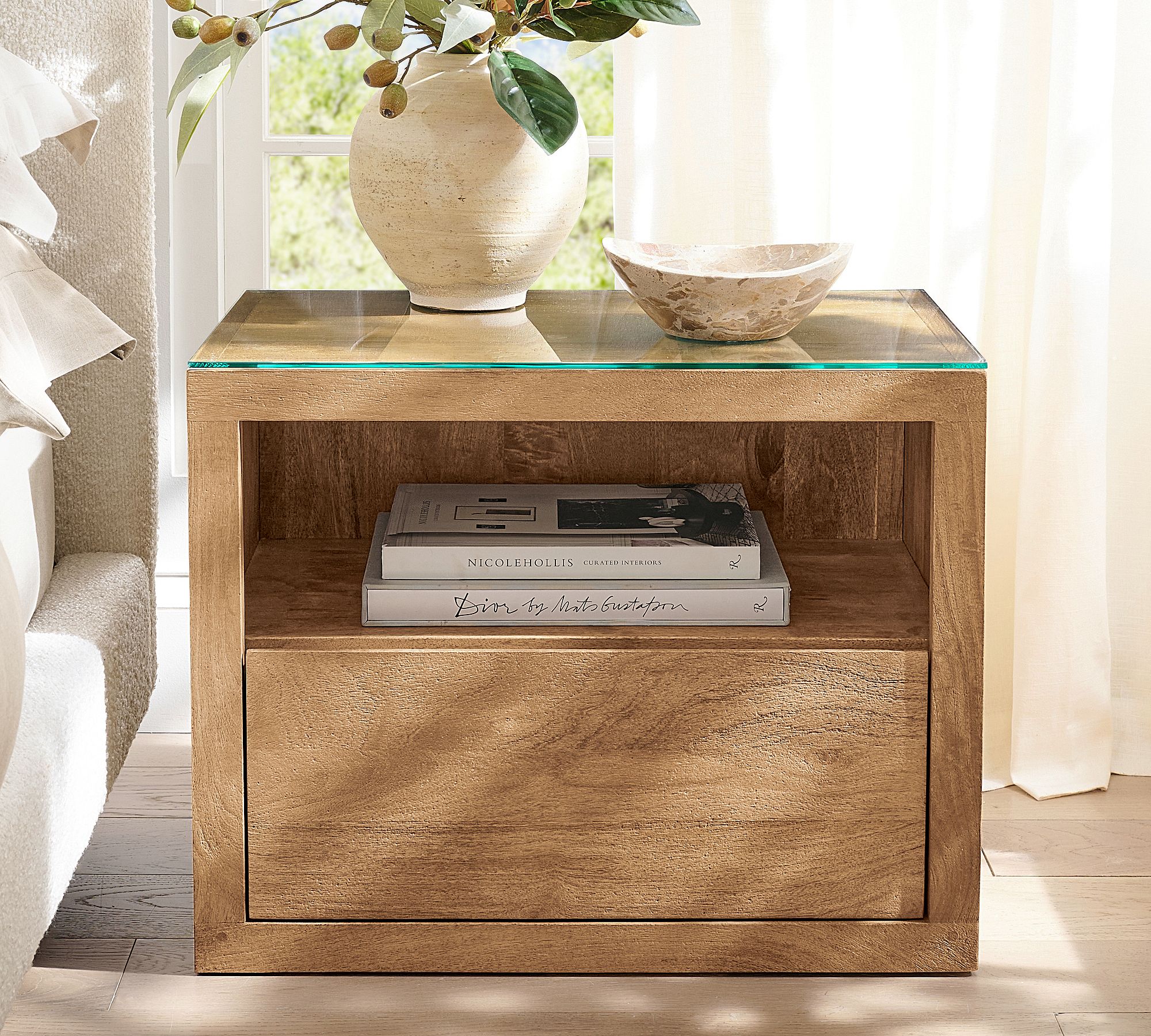
What is the purpose of the image?
The Scale Shot shows the product next to a common, everyday object (like a coin or a laptop) to visually communicate its size. Its purpose is to give customers an accurate and immediate sense of the product's dimensions and prevent surprise or disappointment upon arrival.
What is the image description strategy?
State the product's size in relation to the object in the frame to provide concrete, relatable context. Explicitly name both the product and the reference item, and mention the scale (e.g., "The object is half the size of the coin" or "The product is slightly wider than the standard laptop next to it").
Image Description
The Cayman Nightstand with a glass top and medium wood finish is positioned next to a bed whose mattress is even with the nightstand's top, illustrating its scale. The nightstand features one open shelf with two stacked books and a single drawer below.
What are the types of context to reference when describing a scale shot?
Technical Context (The "What")
The context must clearly identify both the product and the known reference object, specifying their size relationship (e.g., "half the size of...") to translate dimensions visually and concretely.
Content Context (The "Where")
Confirm its use on the PDP gallery to provide a quick, understandable measure of size, directly addressing common customer concerns about item dimensions.
Intentional Context (The "Why")
The primary goal is to prevent disappointment and manage expectations. The description must give a concrete, relatable sense of the product's physical size, prioritizing the reference object over other descriptive details.
Image Type: Group Shot
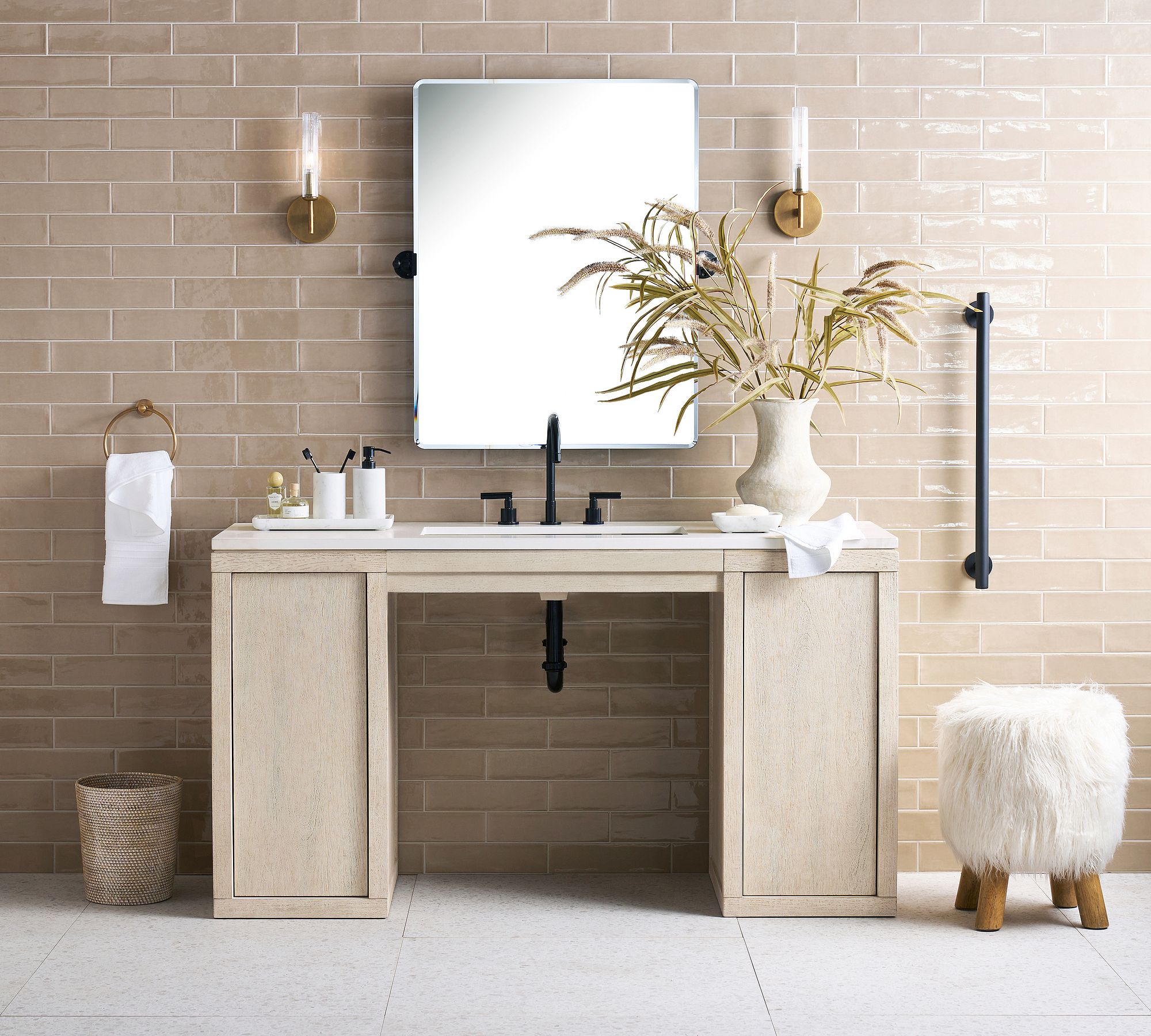
What is the purpose of the image?
A Group Shot shows a product alongside other items. Its purpose is to showcase options, encourage cross-selling, or clarify exactly what the customer will receive in a bundle.
What is the image description strategy?
Describe the main product but also mention the surrounding elements to convey the overall aesthetic and context. Be clear about what the photo shows versus what is included. List the key secondary item s that complete the aesthetic or make up the bundle, always prioritizing the most relevant product information first.
Image Description
A bathroom setting features the vanity, styled beneath the Vintage Rounded Rectangular Pivot Mirror and Cooper Ribbed Sconces. The background features glossy, tan subway tiles. The Mongolian Faux Fur Stool and Linden Grab Bar are to the right.
What are the types of context to reference when describing a group shot?
Technical Context (The "What")
The writer must prioritize the main product while identifying all secondary items that complete the scene or are included in a bundle, being explicitly clear about what is and is not for sale.
Content Context (The "Where")
Confirm its placement on PDPs or Collection Pages where its function is to suggest complementary items or display all available variations or bundle contents.
Intentional Context (The "Why")
The purpose is to drive cross-selling or promote a bundle. The alt text must visually communicate how the main product fits within a larger, desired aesthetic or set of products.
Image Type: 360-Degree Spin Photo

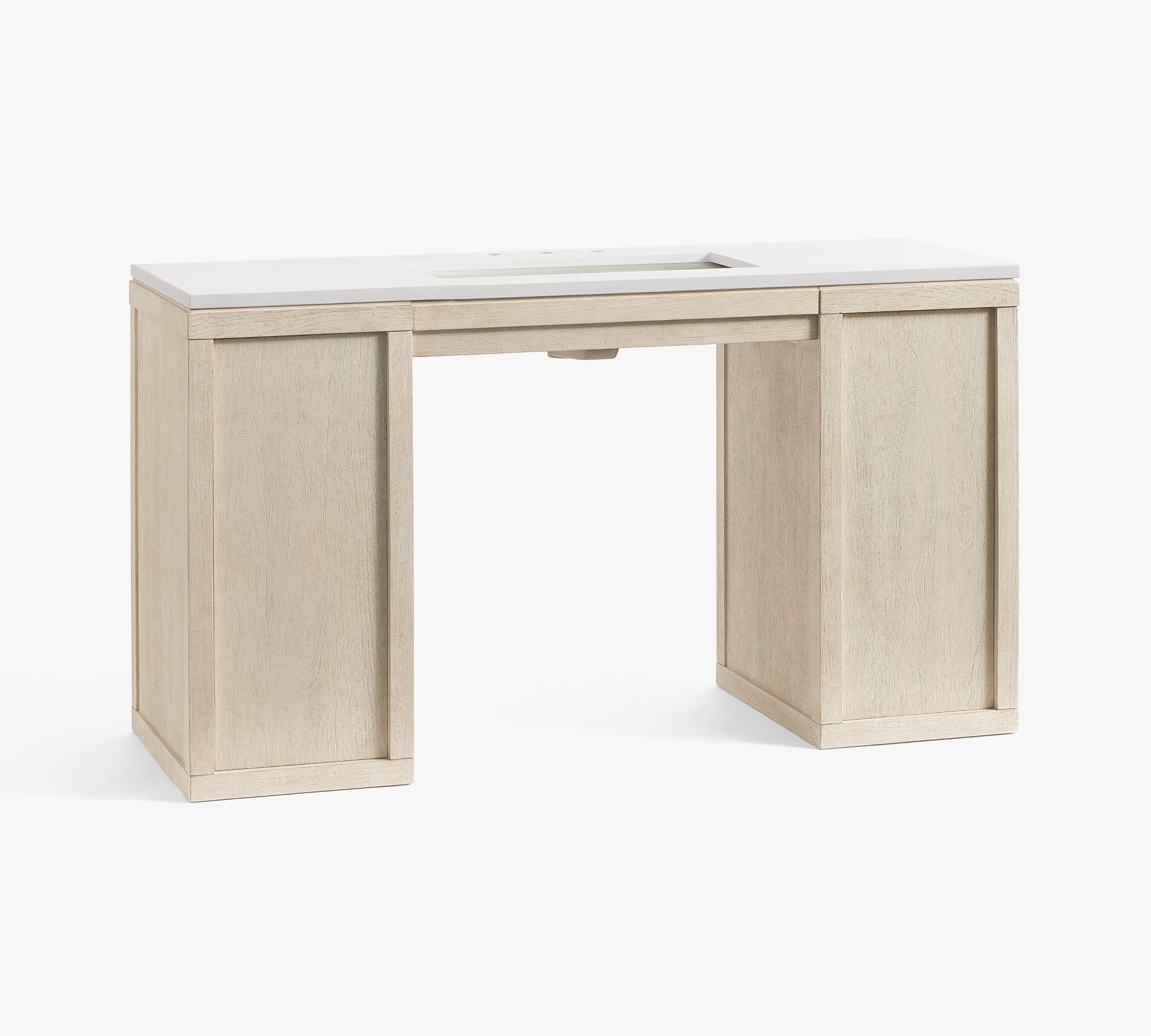

What is the purpose of the image?
A 360-Degree Spin Photo is a series of images stitched together, allowing the user to click and drag to "spin" the product. Its purpose is to give the customer a full understanding of the product's form from all sides, which is especially useful for items like furniture and electronics.
What is the image description strategy?
State that it's an interactive view and mention the key features confirmed from all sides. The description should be comprehensive, summarizing the product's three-dimensional form and any features that are revealed by rotating the view.
Image Description
Interactive 360-degree view summarizes the vanity's form. The rotation highlights the light wood finish, white quartz countertop, and smooth side panels. It specifically reveals the two concealed pop-out drawers and the accessible, open space underneath the base.
What are the types of context to reference when describing a 360-degree spin photo?
Technical Context (The "What")
The context must summarize the product's complete 3D form and all major features revealed from every angle (front, back, sides), confirming its structure and construction in a single, comprehensive text block.
Content Context (The "Where")
The image functions as an interactive tool on the PDP. The description should explicitly state its interactive nature and its function of allowing for a comprehensive, virtual inspection of the product.
Intentional Context (The "Why")
The purpose is to ensure transparency and reduce uncertainty. The description must confirm the user has a full, three-dimensional understanding of the item, promoting confidence in construction quality.
Image Type: Infographic Photo

What is the image purpose?
The Infographic Photo is a product photo that has text overlays, icons, or diagrams pointing out key features, benefits, or dimensions. Its purpose is to quickly communicate a lot of important information in an easy-to-digest visual format, reducing the need for the customer to read long text descriptions.
What is the image description strategy?
Describe the visual element and include the overlaid text to ensure that critical information is communicated. The alt text must prioritize conveying the text content of the graphic (the features, dimensions, or benefits) over a detailed description of the photo itself, as the text is the primary data source.
Image Description
A close-up infographic shows the Linden Towel Bar with Integrated Grab Bar by Michael Graves Design. A hand grips the rail, which is mounted on a white marble subway tiled wall. Overlaid text reads: 'Supportive Rails & ADA-Compliant Hardware.'
What are the types of context to reference when describing an infographic photo?
Technical Context (The "What")
The description must focus almost entirely on the overlaid text, icons, or diagrams. All text must be transcribed or summarized, as the graphic's informational content is more critical than the photo's literal appearance.
Content Context (The "Where")
Confirm its use on the PDP to deliver key data points. The goal is to quickly communicate critical features, benefits, or complex technical specifications in a scannable format.
Intentional Context (The "Why")
The purpose is to simplify complex information. The alt text must translate the information of the graphic, not just the visual elements, to ensure accessibility and immediate comprehension of product benefits.
The Path to Inclusive E-Commerce
This guide established a critical framework for understanding the unique purpose of e-commerce visuals. From this foundation, writers gain the capacity for accurate, context-based image description and the tools to write with precision and intent.
This systematic approach ensures that the value and role of every visual asset are fully recognized and translated into accessible text. Contextual identification is an essential step toward creating e-commerce product pages that are not only compliant but are universally understood and functionally effective for every customer.
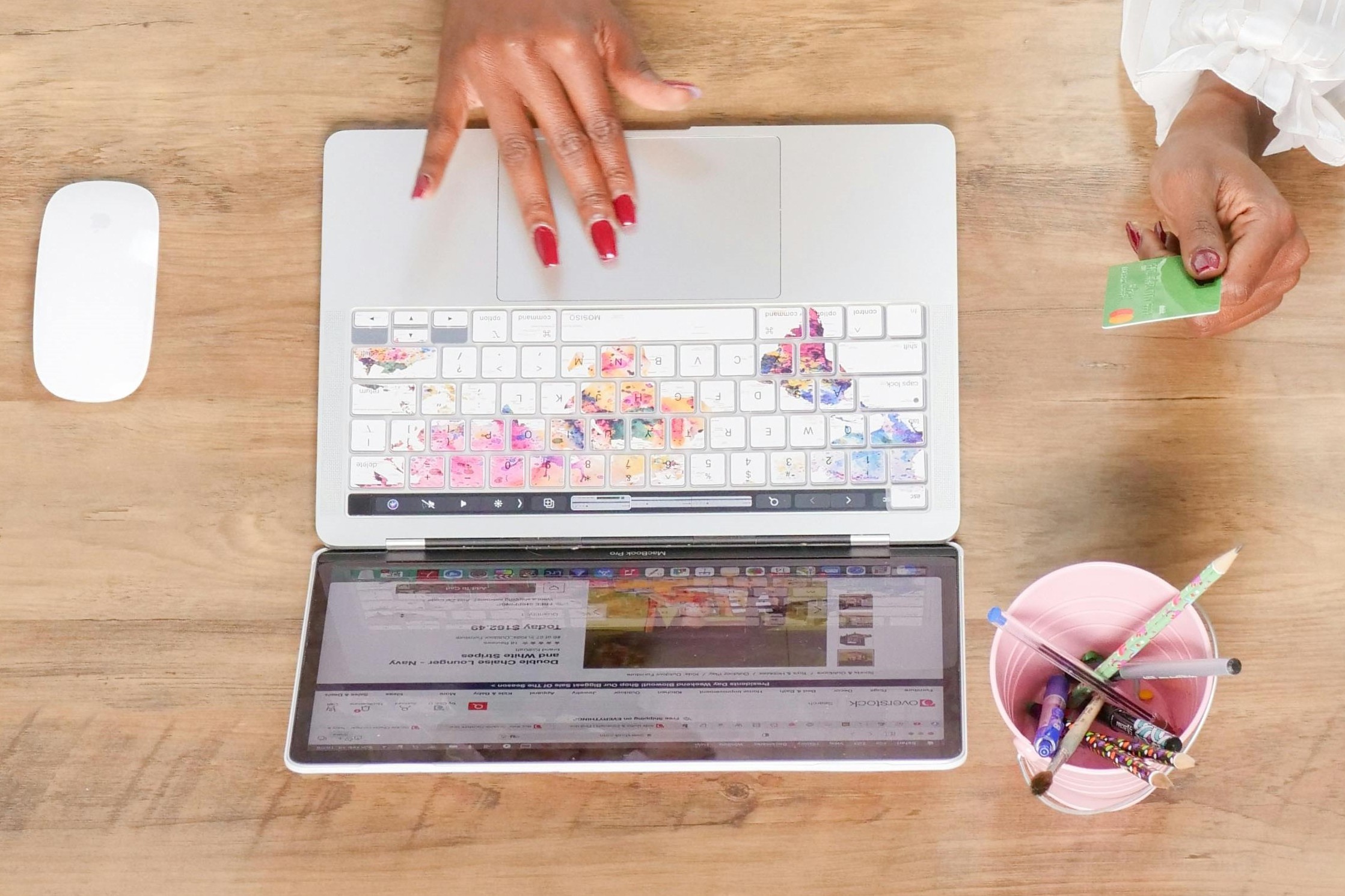
Check out Scribely's 2024 eCommerce Report
Gain valuable insights into the state of accessibility for online shoppers and discover untapped potential for your business.
Read the ReportThis is an optional feature
This is also optional. This should be a short block of text around 2 - 3 sentences.
Cite this Post
If you found this guide helpful, feel free to share it with your team or link back to this page to help others understand the importance of website accessibility.





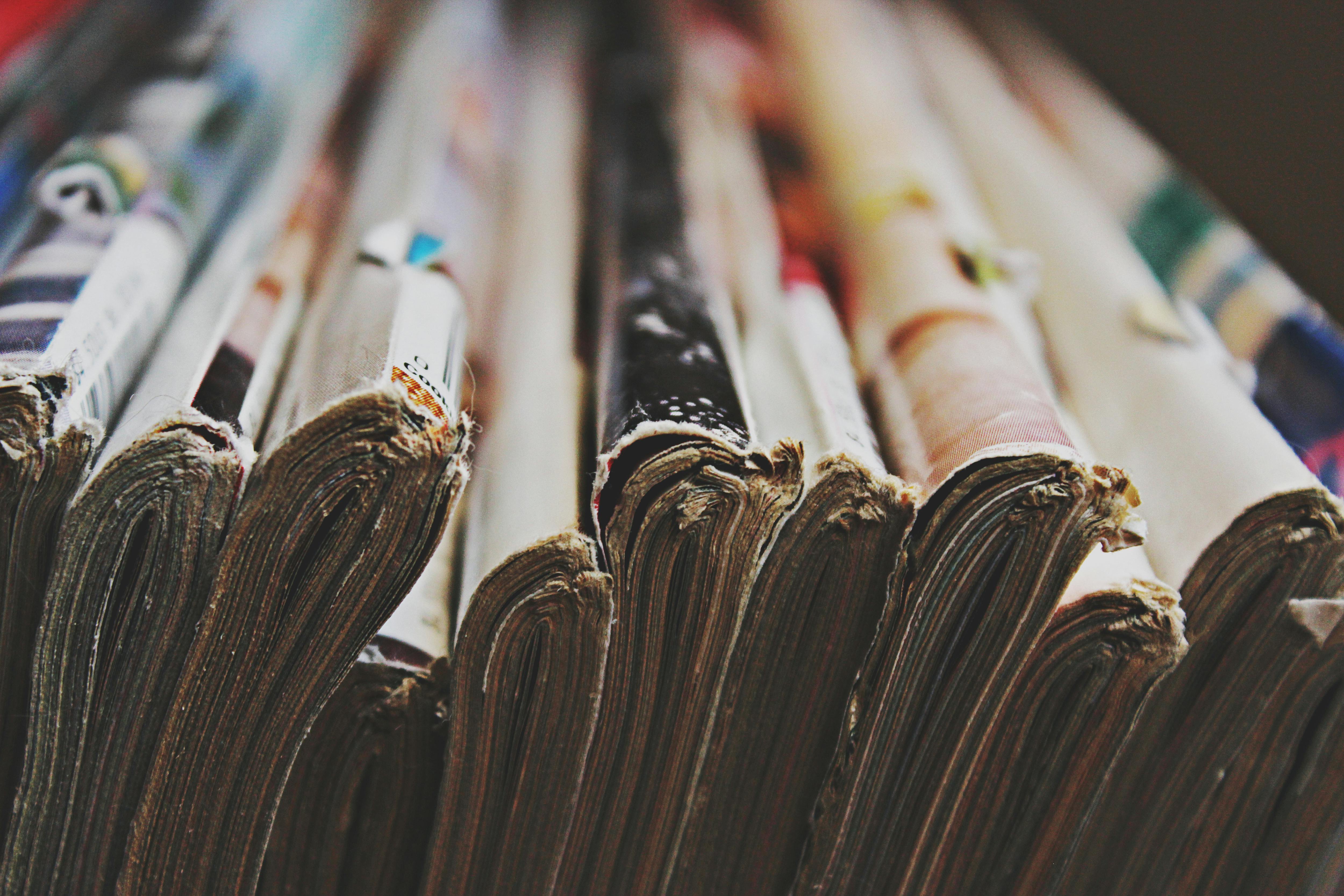
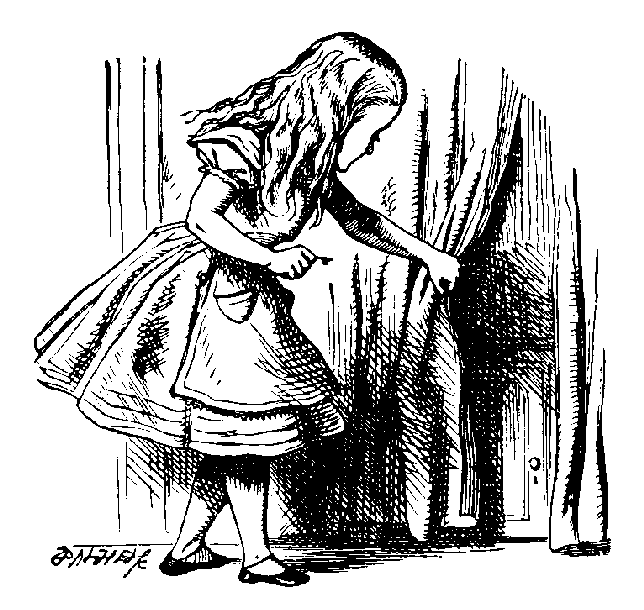


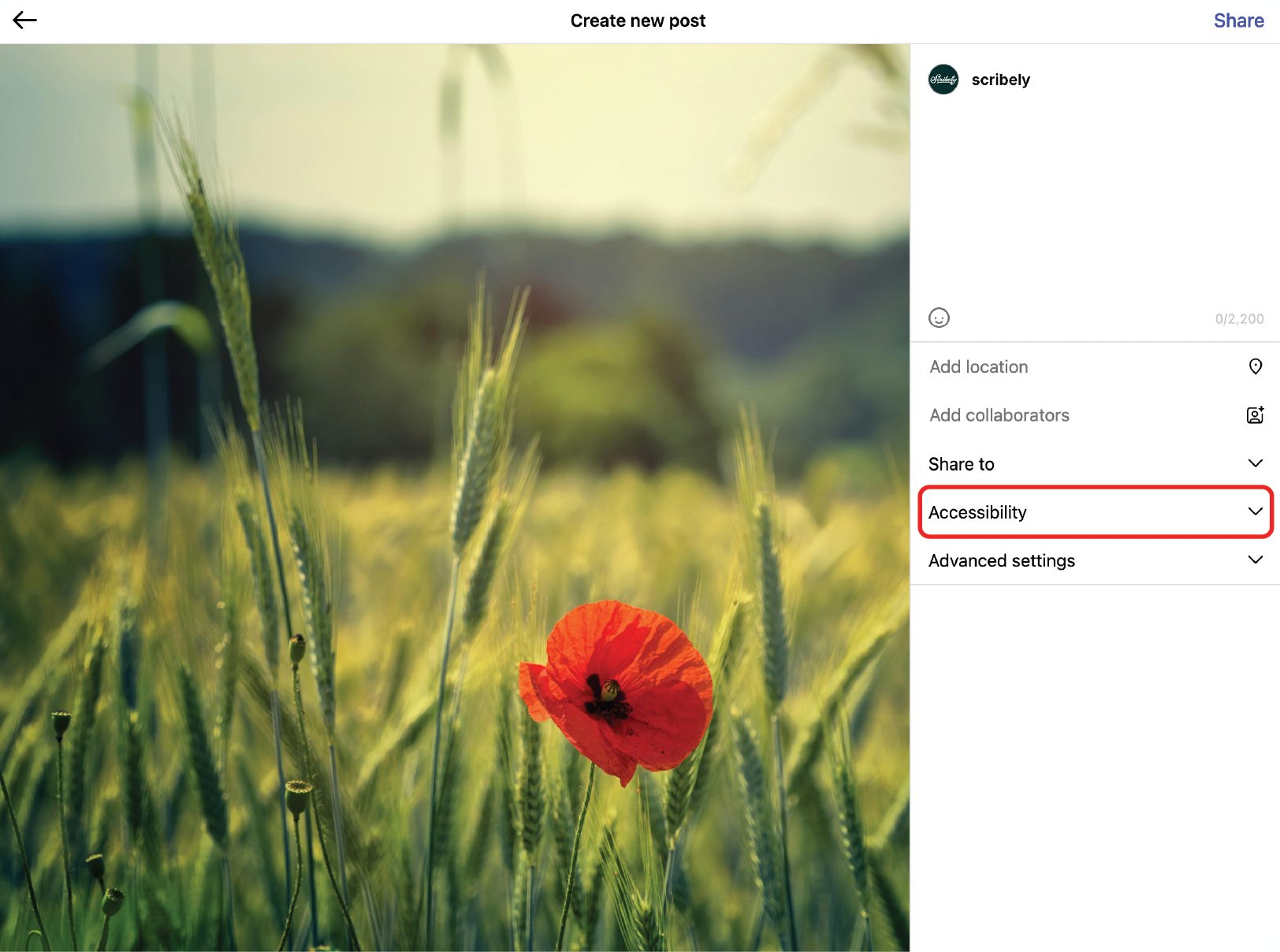
.jpg)





.jpg)



























_edited_6x4-p-1080.jpeg)


